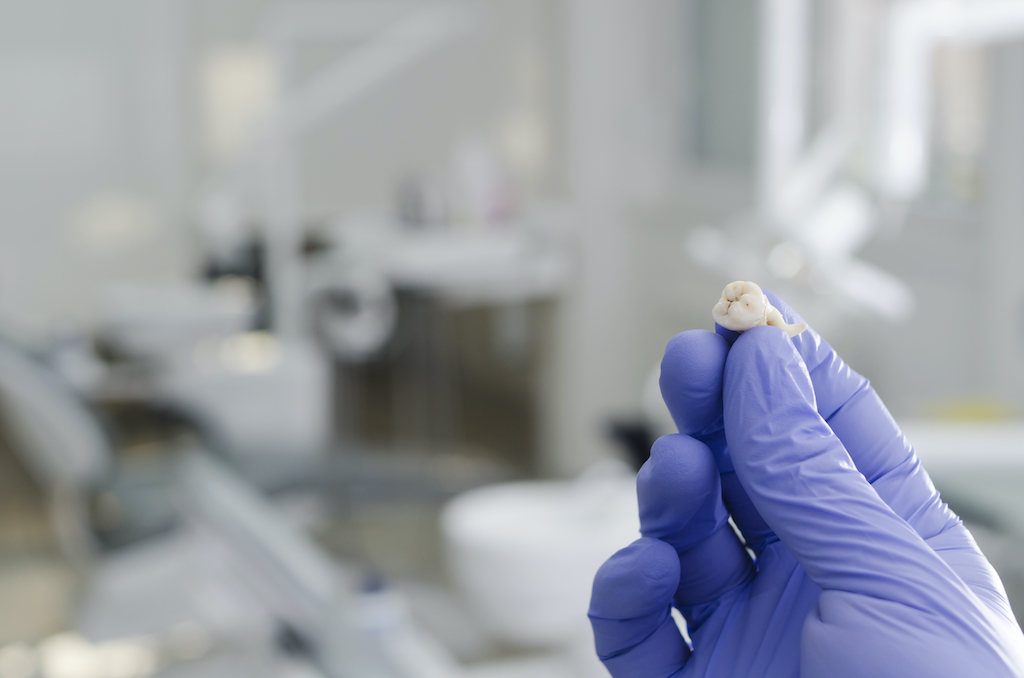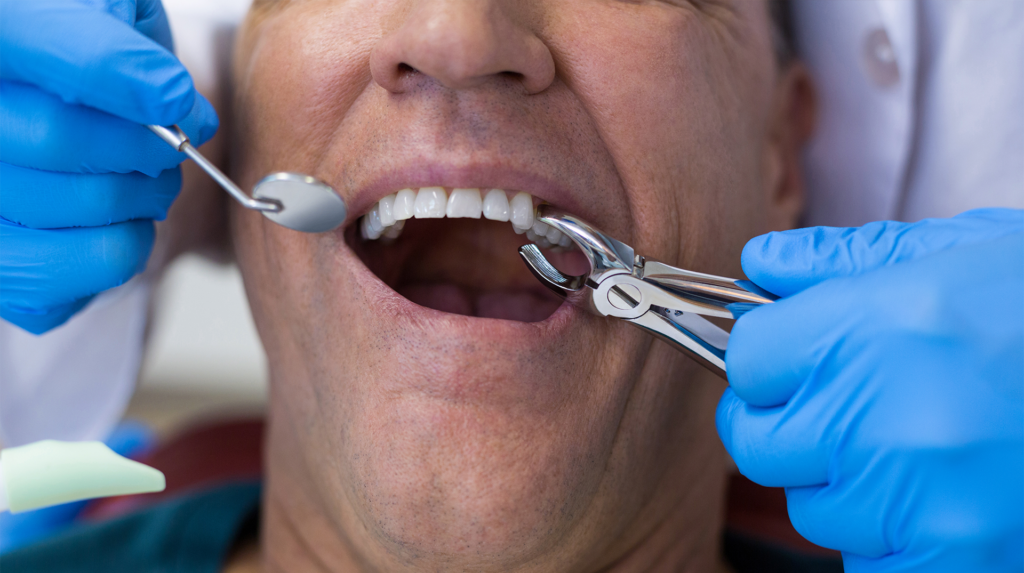Protect your oral health with a tooth extraction
Tooth Extraction
When teeth are impacted, decaying, or broken, they cause discomfort. Dentists may try to fix the issue with a crown or other alternatives. However, if the damage is too severe or potentially hurting surrounding teeth, it may be best to remove the decaying tooth. This is called an extraction.


What you should know.
A tooth extraction is one of the most common dental procedures performed in the United States. Many patients come in to have a tooth removed and leave shortly thereafter. While not the solution for every toothache, there are many valid reasons to have a tooth extracted.
- Crowding of teeth
- Risk of infection
- Decaying teeth
- Effects of severe periodontal disease
- Very loose teeth due to bone loss
- Impacted wisdom teeth (third molars)
Care after a tooth extraction.
While the tooth extraction may be over quickly, the oral care that you follow after your procedure will greatly impact your overall oral health. After a tooth extraction, the surgeon will send you home to recover and will provide a plan for pain management.
Here are some helpful tips on reducing discomfort, speeding the healing process, and minimizing the risk of infection:
- Bite firmly on the gauze your surgeon provided.
- Change the gauze every 20 - 30 minutes until the bleeding has subsided.
- Follow the pain management instructions provided by your surgeon.
- Do not rinse or spit forcefully for the first 24 hours (Try to shake your head to rinse and let water pour out of your mouth to avoid dislodging the blood clot). After 24 hours, you can do a gentle saltwater rinse.
- Apply an ice pack to your face for 20 minutes at a time to minimize swelling.
- Do not drink from a straw for the first 72 hours.
- Do not smoke.
- On the first day, stick to cool, soft foods.
- During the first night, sleep with your head elevated to avoid prolonged bleeding.







